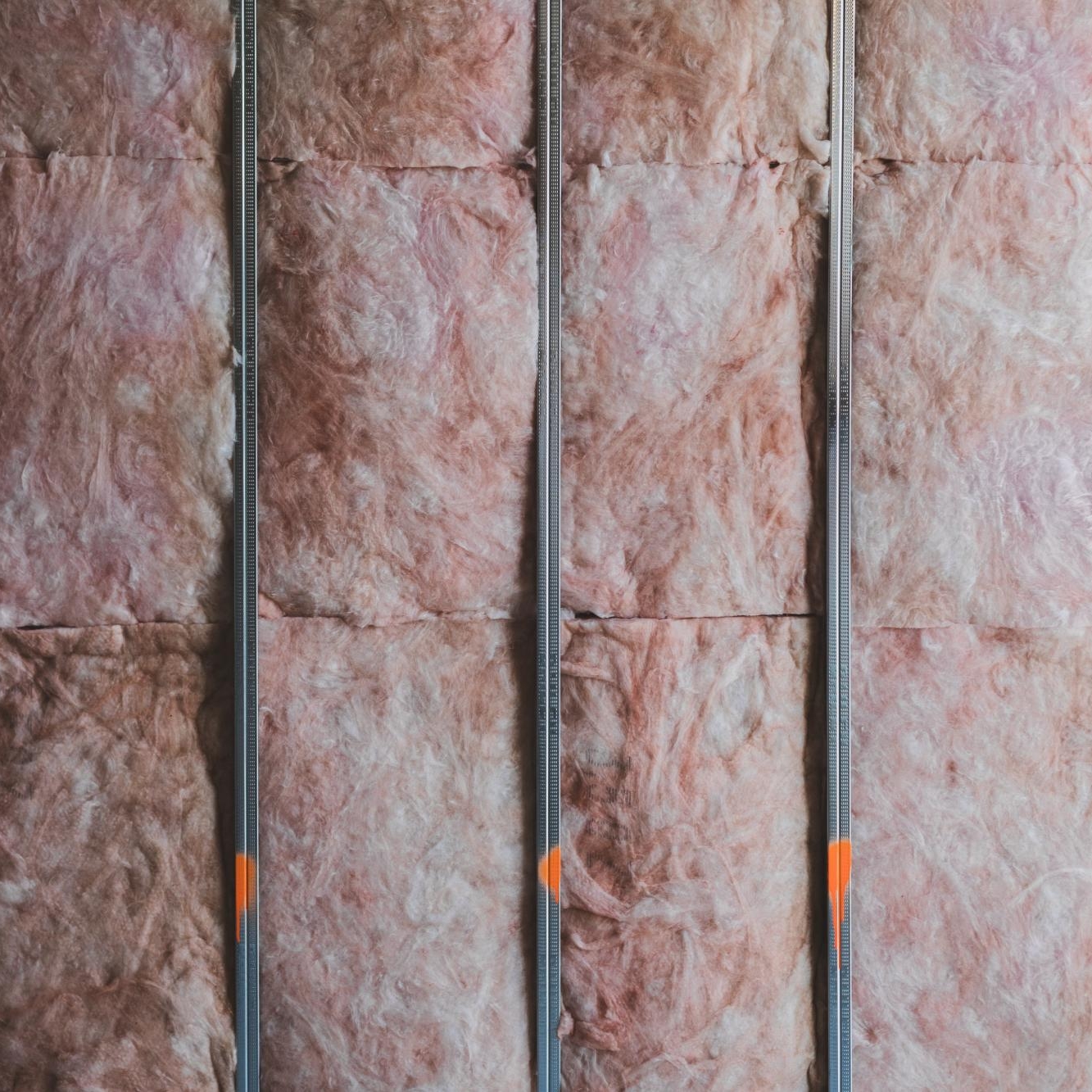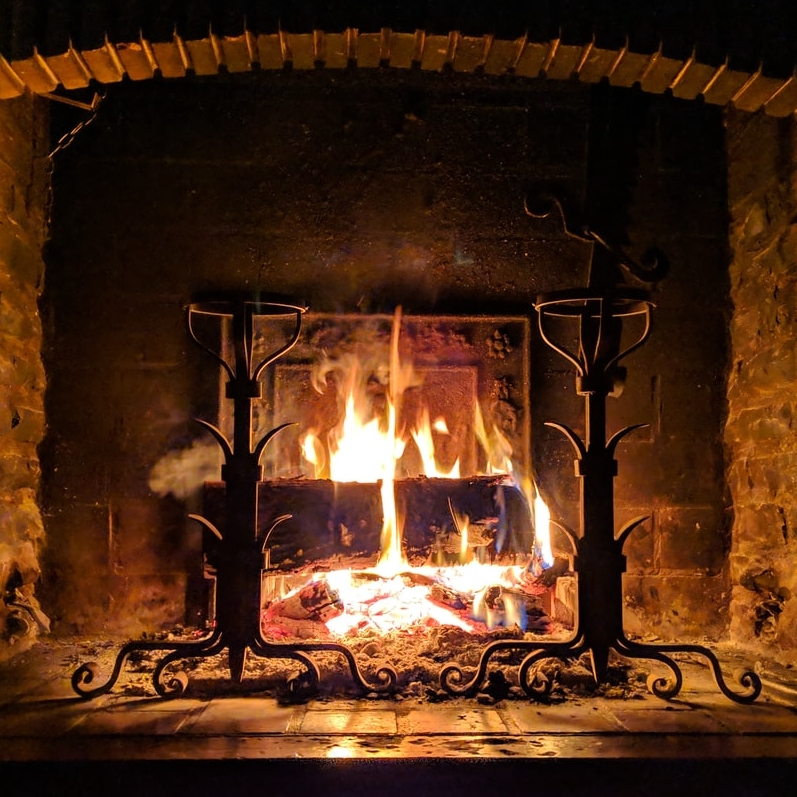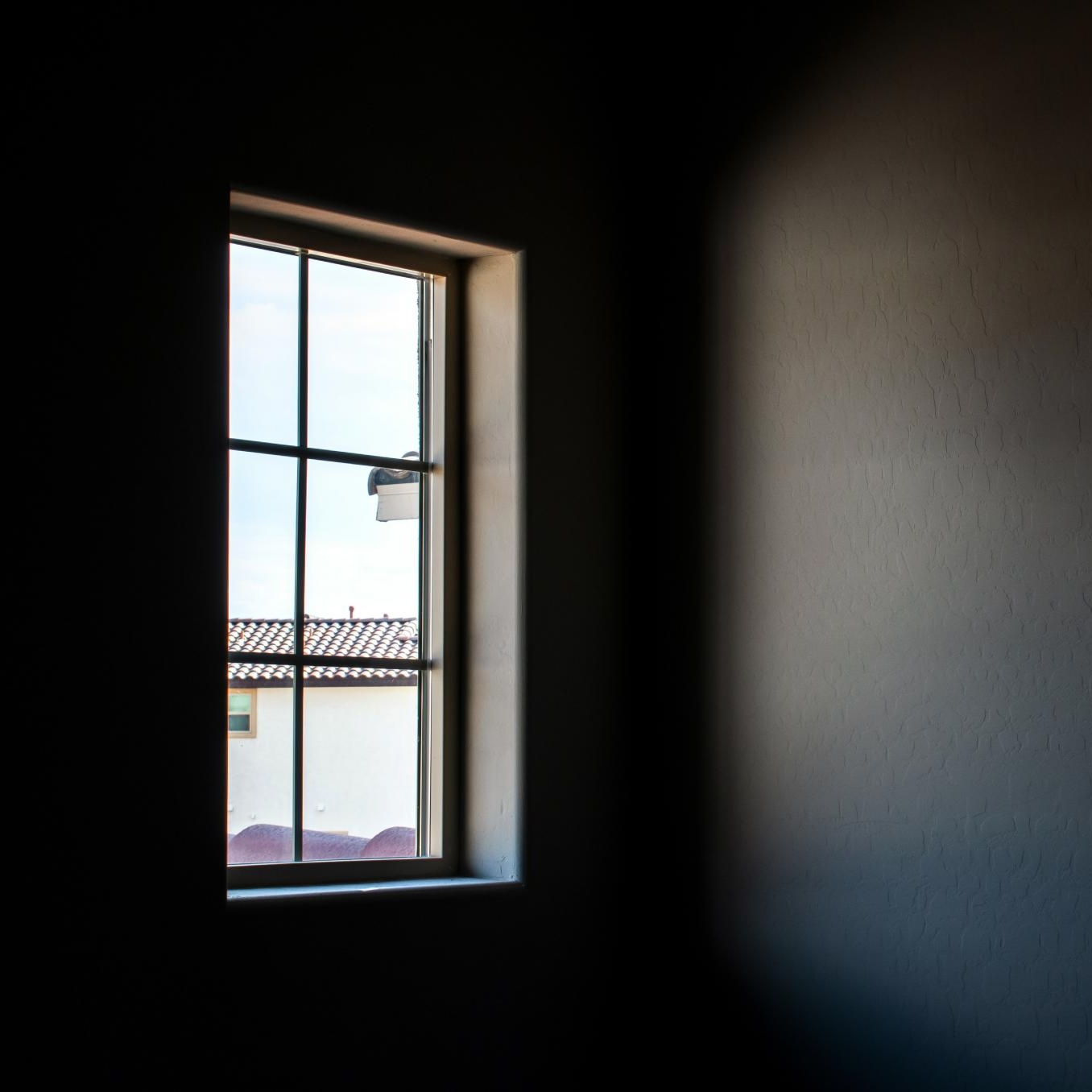Make yourself at home! Use the navigation buttons below to explore each area of your home to uncover eco-friendly tips, information and videos on how to help make your home more energy-efficient.
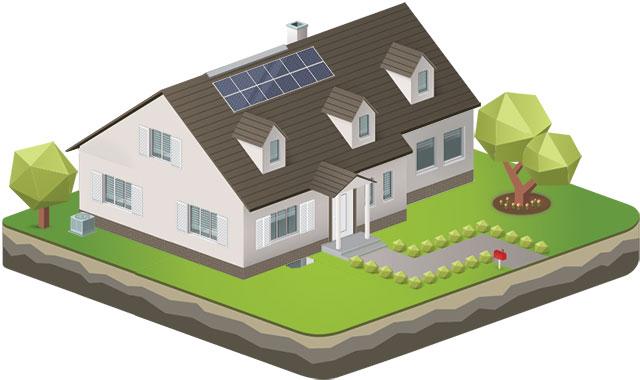
To ensure the most efficient operation of your fireplace, install tempered glass doors and a heat-air exchange system that blows warmed air back into the room, and close the damper when it is not in use.
Attic ventilation is required for moisture removal during the winter months and heat removal during the summer months. Proper ventilation sizing requires 1/150th of the square footage of attic area, half in high roof and half in soffits.
Learn more about ENERGY STAR® windows, doors and skylights.
Minimum
U-Factor .35 or less, proper flashing and slope drainage
Better
U-Factor .30 or less, Low “E” coating, gas filled, proper flashing and slope drainage
Best
Triple-pane glass, Low “E” coating, gas filled, proper flashing and slope drainage
ENERGY STAR® heat pumps and air conditioners have higher seasonal energy efficiency ratio (SEER) and energy efficiency ratio (EER) ratings, as well as a higher heating seasonal performance factor (HSPF) than standard models, making them about 9 percent more efficient than standard new models and 20 percent more efficient than what you may have in your home.
Geothermal heat pumps are over 45 percent more energy efficient than standard options.
Read about LES' Sustainable Energy Program incentives.
Minimum
Furnace with standard 13 SEER central air conditioner or 8 HSPF heat pump
Better
16 SEER, 9 HSPF air source heat pump with variable speed air handler or 90 percent annual fuel utilization efficiency sealed combustion fossil fuel furnace with variable speed blower
Best
Variable capacity geothermal heat pump
NOTE: Proper sizing required, Manual J sizing worksheet or equivalent in all applications
Strategically planting deciduous trees near south-, east- and west-facing windows will provide needed shade in the summer but let in the sun's heat during the winter.
Learn about planting the right tree in the right place for safety, reliability and accessibility
A solar electric or photovoltaic system uses solar cells to capture the sun's rays and convert that energy into electricity. Such systems allow homeowners to generate electricity in a clean, reliable and quiet way that can offset the cost of future electricity costs and decrease their dependence on the energy grid.
Read about LES solar and customer-owned generation.
LES customers have several ways to invest in solar, including installing your own, purchasing “virtual” panels at your local community solar facility, or making a monthly donation benefiting community solar. Visit our solar page.
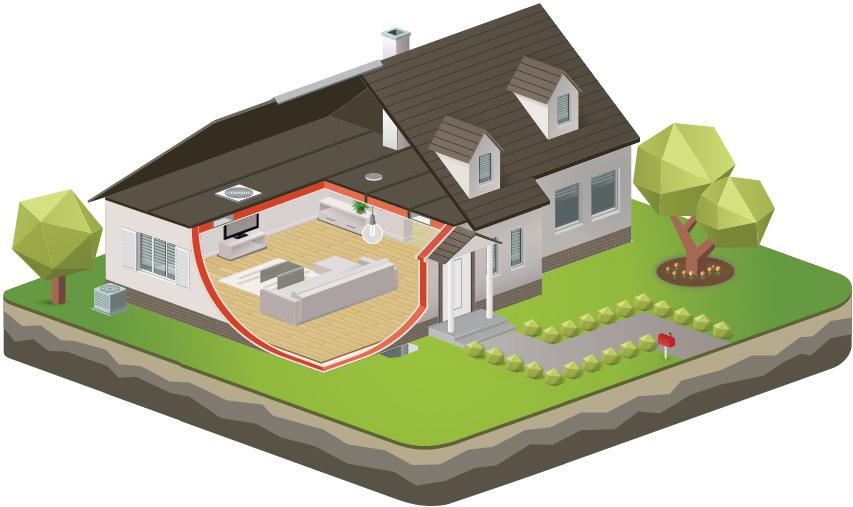
Learn more about ventilation systems.
Minimum
Bath fans that meet American Society of Heating, Refrigerating and Air-Conditioning Engineers 62.2
Better
Exhaust or supply-only ventilation low sone (sound) rating and that meet performance criteria of the bathroom’s required exhaust
Best
Source point whole-house ventilation with a heat recovery ventilator or energy recovery ventilator
NOTE: All ventilation must meet ASHRAE 62.2.
LES recommends LED lighting for maximum energy efficiency. Certified ENERGY STAR® LED light bulbs use about 70-90 percent less energy than traditional incandescent bulbs and last 10-25 times longer, saving $30 to $80 in electricity costs over their lifetime. They produce about 70-90 percent less heat so are safer to operate and can cut energy costs associated with home cooling.
Minimum
High-efficiency lighting in at least 50 percent of the permanently installed light fixtures – LEDs
Better
High-efficiency lighting in at least 75 percent of the permanently installed light fixtures – LEDs
Best
High-efficiency lighting in at least 75 percent of the permanently installed light fixtures – LEDs, motion-sensing LEDs, advanced sealing of any penetrations in envelope used for lighting
Read a do-it-yourself guide to sealing and insulating.
Minimum
R-38 blown insulation with insulation contact airtight recessed can lights sealing all penetrations
Better
R-45 blown insulation with insulation contact airtight recessed can lights, use of energy trusses, advanced sealing of all penetrations from living space into unconditioned areas
Best
R-60 blown insulation with insulation contact airtight recessed can lights, use of energy trusses, advanced sealing all penetrations from living space into unconditioned areas
Read more about LES' Sustainable Energy Program.
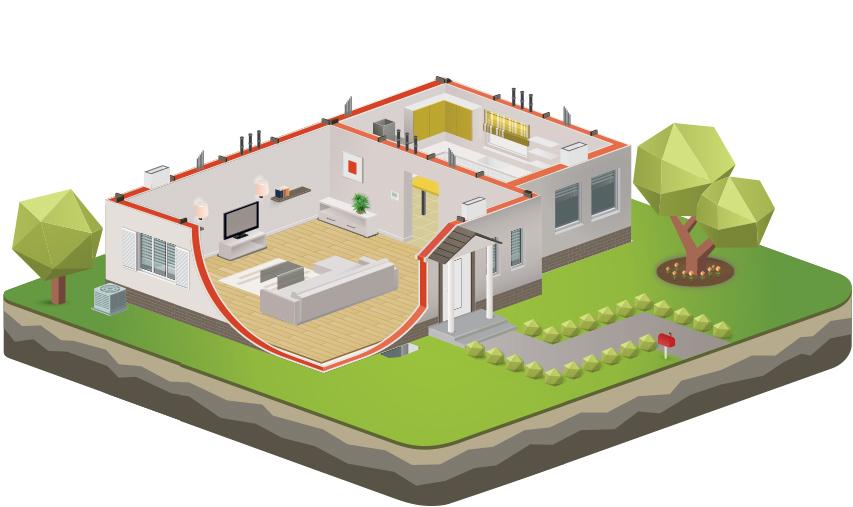
Minimum
All ducts, air handlers, filter boxes and building cavities used as ducts should be sealed and if any ductwork is outside of conditioned space, insulated R-8 supply, R-6 for all others and duct leakage test
Better
Combination of sealing mastic and UL181 foil tape. Supply and return duct systems should be within the confines of conditioned space with little or no flex duct.
Best
All ductwork, supply and return hard ducted and sealed; supply and return duct systems should be within the confines of conditioned space with little or no flex duct; tested for air leakage; sized correctly and balanced
NOTE: Proper fabrication/sizing according to Manual D sizing worksheet or equivalent in all applications
Minimum
2'x6' walls with R-20 cavity insulation or 2'x4' wall with R-13 cavity with R-5 continuous insulation
Better
2'x6' walls with R-20 cavity-blown insulation and R-5 insulating sheathing
Best
2'x6' walls with R-20 cavity-blown insulation and R-10 insulating sheathing with optimum value engineered framing, 24” on center insulated headers, ladder blocking, two stud corners
Electrical and utility penetrations in exterior walls or through the ceiling should be sealed with airtight construction practices. Recessed lighting fixtures that extend into unconditioned areas include airtight enclosures, while electrical outlets and switches on exterior walls and ceiling light fixtures should be airtight.
Plumbing penetrations in exterior walls or through the ceiling should be sealed with airtight construction practices.
ENERGY STAR® certified audio/video equipment is up to 60 percent more efficient than conventional models. If each TV, DVD and home theater system purchased in the U.S. this year earned the ENERGY STAR, we would prevent more than 2.2 billion pounds of greenhouse gas emissions every year, equal to the emissions from more than 200,000 cars.
During cold weather, take advantage of the sun's warmth by keeping drapes open on south-facing windows during daylight hours. Close shades and drapes after the sun goes down to help improve insulation and prevent heat loss. In the heat of the summer sun, close window shades and drapes.
A programmable thermostat helps you save energy and reduce greenhouse gas emissions that contribute to global warming. Give it a try, keeping in mind that setting temperatures up or down when you are away or asleep is an easy way to save energy and money without sacrificing comfort.
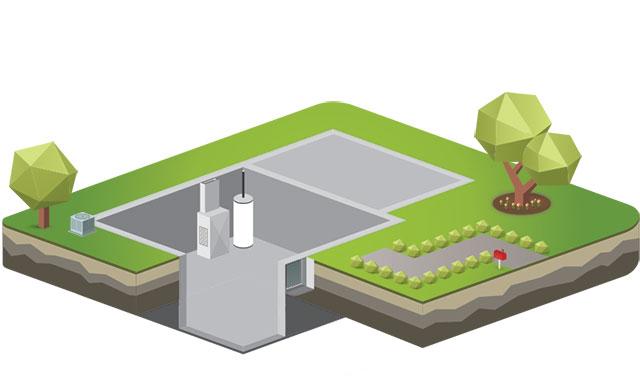
Learn about basement air sealing and insulating.
Minimum
8" concrete walls with R-10 continuous or R-13 cavity with standard below-grade waterproofing system
Better
8" concrete walls with R-13 insulation and minimum R-5 continuous interior or exterior foam insulation with waterproofing membrane
Best
8" concrete walls with R-13 insulation and minimum R-10 continuous interior or exterior foam insulation with hydroscopic waterproofing system
Learn about sealing air leaks in your basement.
Minimum
R-20 cavity insulation or R-13 cavity with R-5 continuous insulation
Better
R-20 cavity insulation or R-13 cavity with R-5 continuous insulation and airtight sealing (gaskets, caulking or foams)
Best
R-20 spray foam
Minimum
Standard storage electric or fossil fuel water heater
Better
Heat pump or high-efficient fossil fuel sealed-combustion water heater
Best
Water heater with geothermal heat pump applications
Check your furnace filter every month, especially during heavy-use months (winter and summer). If the filter looks dirty after a month, change it.
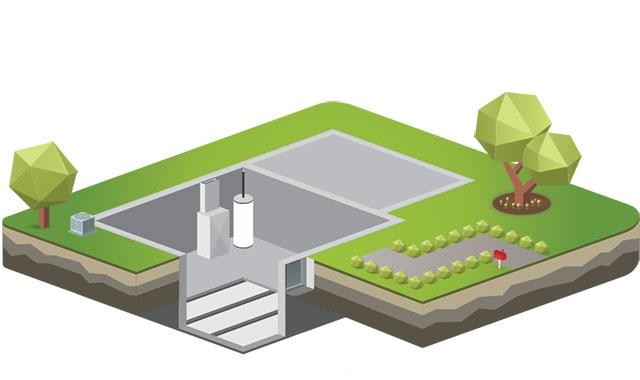
Minimum
4" concrete floor
Better
4" concrete floor with drain tile and sump pit, minimum 6-millimeter poly with taped seams
Best
4" concrete floor, exterior/interior drain tile sealed radon mitigation sump pit system, 4"-6" of aggregate, minimum R-10 XPS (under-slab) insulation on all edges and beneath entire floor area, 6-millimeter high-density poly with taped seams
Minimum
4" concrete floor; R-10 insulation from slab edge 2' vertical or 2' horizontal – on all sides
Better
4" concrete floor, R-10 insulation on all slab edges and beneath entire floor area, minimum 6-millimeter poly with taped seams
Best
4" concrete floor, 4"-6" of aggregate, minimum R-10 XPS (under-slab) insulation on all edges and beneath entire floor area, 6-millimeter high-density poly with taped seams
Learn more about basement air sealing and insulating.
Minimum
R-30 cavity insulation with subfloor contact or full cavity insulation minimum R-19
Better
R-30 cavity-blown insulation with contact on all six sides and R-5 insulating sheathing
Best
R-30 cavity-blown insulation with contact on all six sides, R-10 insulating sheathing and airtight sealing


